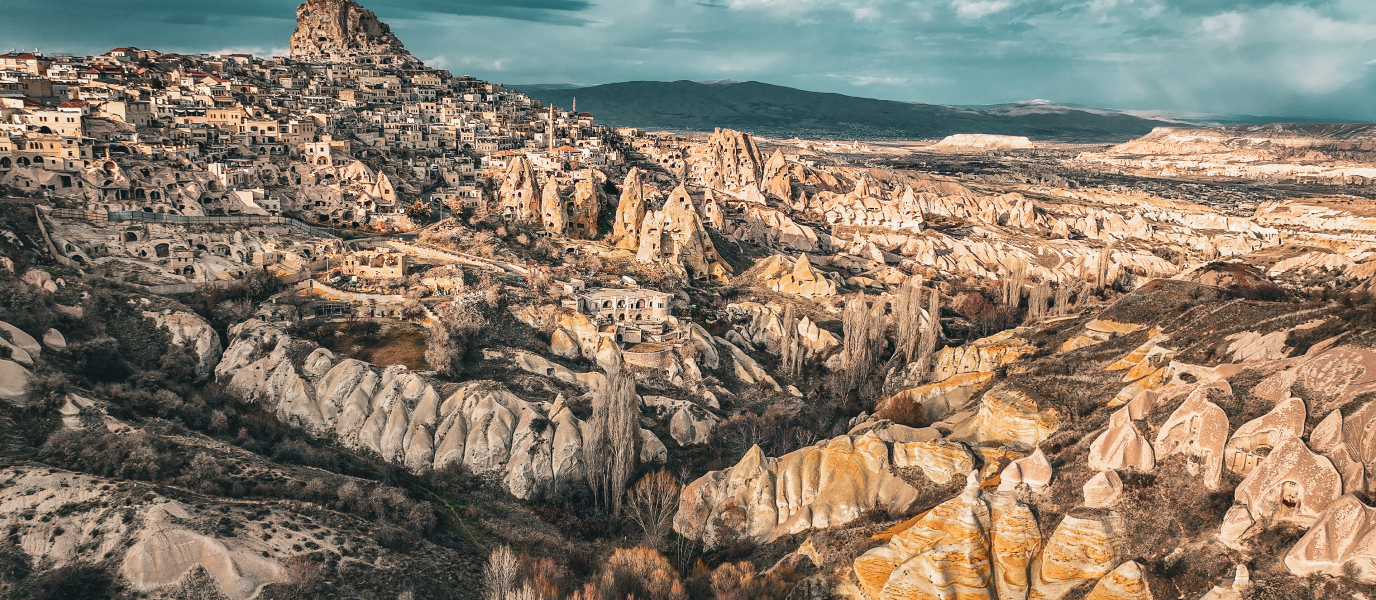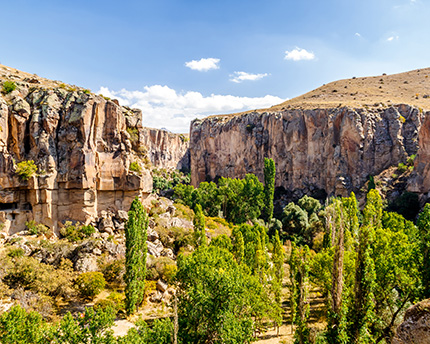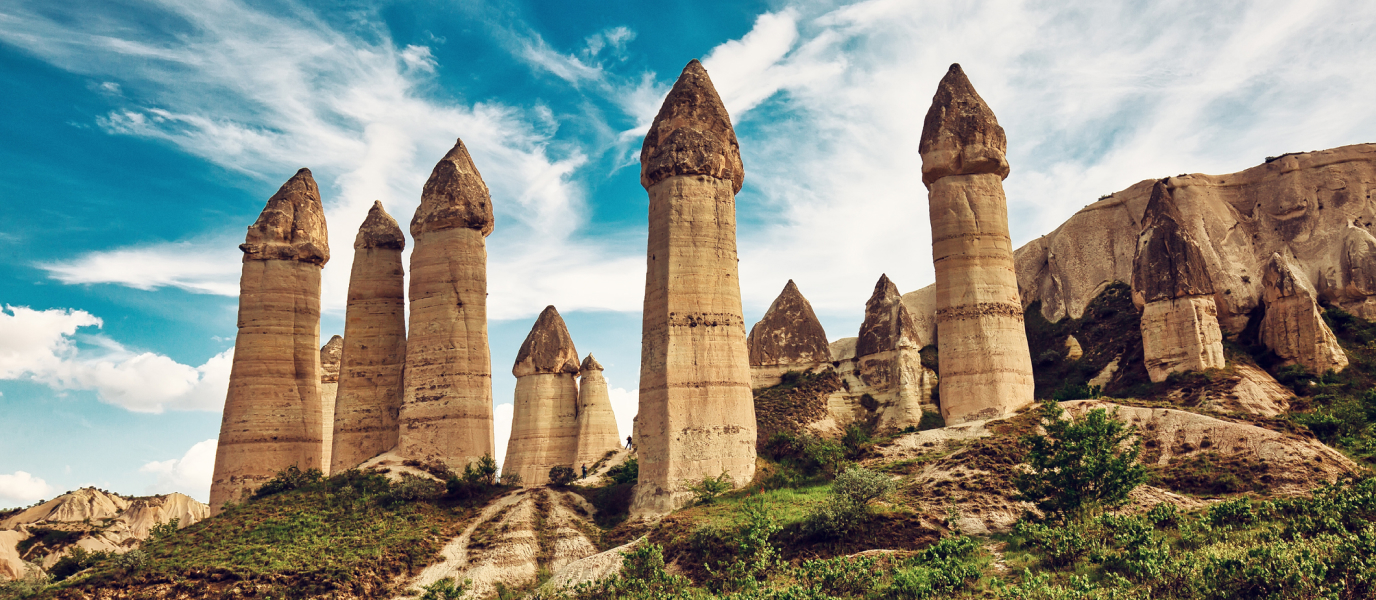The village of Çavuşin is undoubtedly one of the most emblematic of Cappadocia. This is why it’s also one of the most visited villages there. In fact, it usually forms part of many of the sightseeing tours around the region.
This makes sense, because the village of Çavuşin, despite its small size, is home to much of Cappadocia’s soul. These include the impressive geological formations created by the lava from various volcanic eruptions; seemingly impossible structures that take full advantage of this particular type of geology; and the existence of several churches, testimony to the Christianisation of this region, which took place from the 4th century onwards.
History of the village of Çavuşin
The origins of the village of Çavuşin are believed to date from Roman times, a civilisation of which some significant remains have been found. But the turning point in the existence of Çavuşin took place during the Byzantine period, i.e. from the 3rd century AD onwards.
It was then that the first Christian hermits arrived here, who made the most of the ease with which the volcanic tuff was to work with to carve out places where they could pray and live.
Many of these religious men chose Çavuşin, like the rest of the region, precisely because of the tranquillity and isolation it offered, due to the difficulties of travelling through what was such a hostile territory at that time.
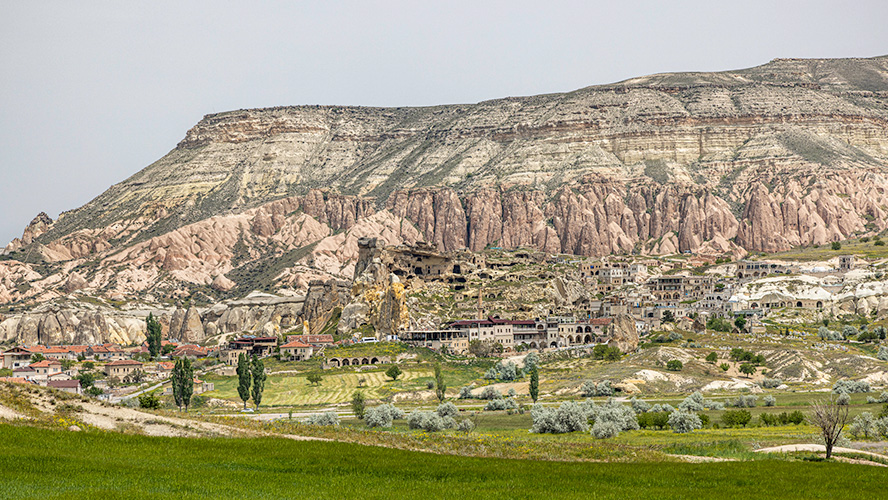
With the arrival of the Seljuk Turks in the 11th century, a relatively stable period in the history of Çavuşin began, with the coexistence of different cultures and religions. Gradually, however, the Christian communities dwindled, mainly after the final demise of the Eastern Roman Empire with the capture of Constantinople (modern-day Istanbul) in the mid-15th century.
Even so, several Orthodox Christian families continued to live in the village of Çavuşin until the 1920s, when there was a significant exchange of population between Turkey and neighbouring Greece.
A tragic landslide in the 1950s forced the survivors to move to a safer place on the plateau. Therefore, today, despite the fact that the village of Çavuşin has retained the appearance that it had in medieval times, the structures in the old part of the town are bare and lifeless. However, this doesn’t detract from their charm and adds a touch of mystery to any visit.
Churches of St John the Baptist and St Nikephorus
The most striking and iconic monuments of the past in the village of Çavuşin are undoubtedly these two churches. The first, the 5th-century Church of St John the Baptist, is considered to be the second-oldest Christian church in Cappadocia. It’s located in the upper part of the village and offers a breathtaking view of the Red Valley (discussed below) and of Uçhisar Castle.
Inside the church of St John the Baptist, you can see one of the most impressive paintings in the region and in a reasonably good state of preservation: a fresco depicting the killing of St John the Baptist, cousin of Jesus of Nazareth.
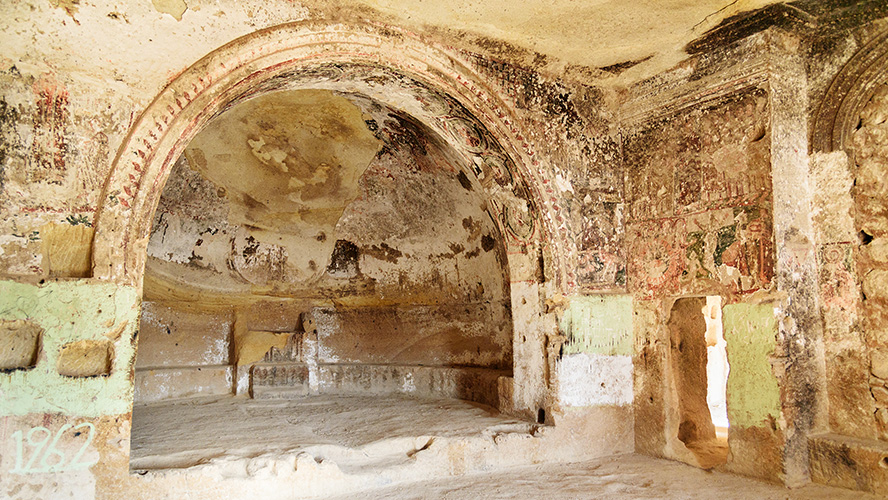
The Church of St Nikephorus, built on the occasion of the visit of the Byzantine Emperor Nikephorus II, dates from the 10th century. It’s one of the best-preserved Christian temples in Cappadocia and has an extensive collection of frescoes on its walls, depicting both scenes from the New Testament and allegorical scenes featuring the emperor himself and his family. It’s definitely a must-see for history and art lovers.
Old Town
As mentioned above, the old town of Çavuşin is composed of a succession of houses and other structures carved into the distinctive volcanic tuff mounds. There are a string of doors and windows that were intended to provide light and ventilation to the inside of the houses.
Many of them are still standing in the old town of Çavuşin and a walk among them, despite the steep and winding terrain, is a fascinating demonstration of architecture and of how human beings have adapted to the surroundings. The level of comfort and spaciousness enjoyed by the people who lived in them, not without first going to great lengths to build them, is astonishing.
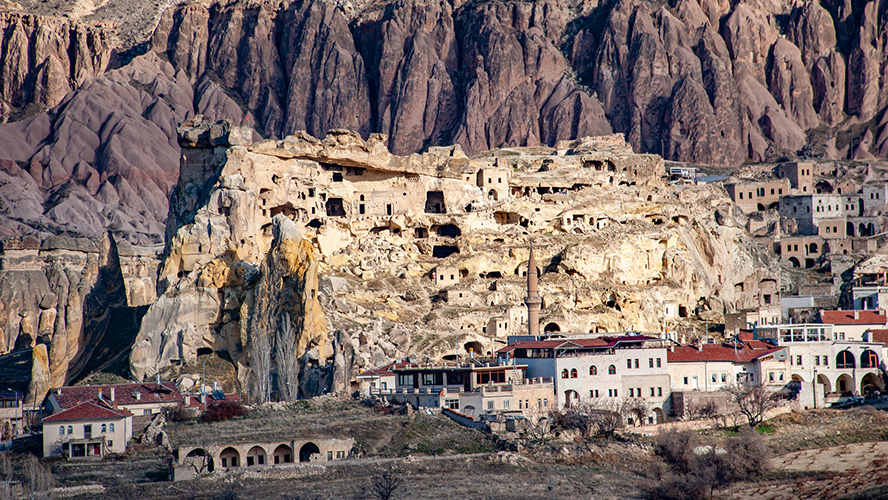
The Red Valley
The Red Valley, so geologically symbolic of Cappadocia, is the site of the village of Çavuşin. Although its official name is Kizilcukur Valley, everyone refers to it as the “red” valley because of the characteristic colour of the rocks that form part of it. Especially during sunrise and when the sun is close to setting.
In addition to the colour of the rocks and soils that make up the valley’s geological layout, the pinnacle-shaped structures that are dotted all over the area are also very striking.
This is one of the most popular hiking routes in Cappadocia. This route can be done either on foot or in an all-terrain vehicle, which is an option offered by several adventure companies. It’s also one of the most popular areas for hot air balloon rides. This is a highly recommended activity that starts just before dawn and allows you to admire the beauty and uniqueness of this landscape from a privileged bird’s-eye view.
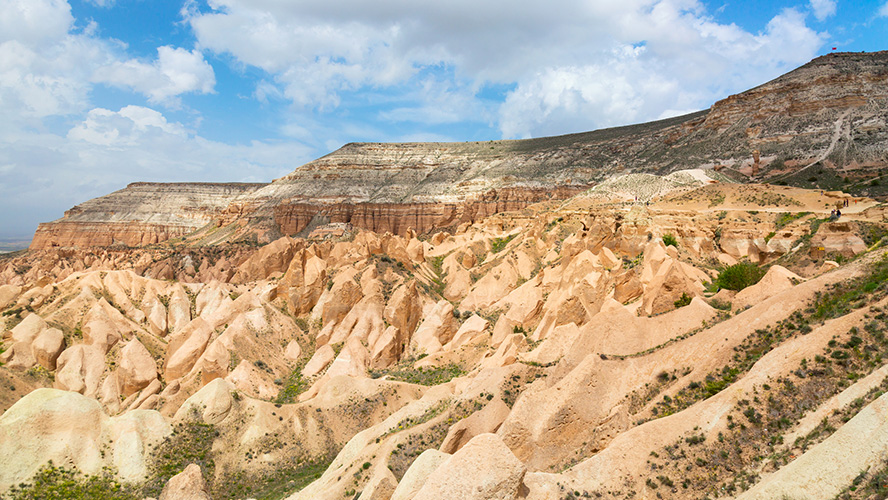
Where to eat
There are plenty of dining options in Çavuşin. Here are some good examples:
Çavuşin Han (2 Küme evleri, 51)
This restaurant, which offers traditional and homemade cuisine, is one of the best places to eat not only in the village of Çavuşin, but also in the rest of the region. Among the dishes not to be missed is mantı, i.e. the stuffed pasta version of typical Turkish food (link to corresponding URL). There are also different types of dishes with lamb as the main ingredient.
Çavuşin Depe Restaurant (2 Küme Mevkii, 141)
Aside from the truly spectacular views on offer from this restaurant, it stands out because of the care with which they prepare their lamb stews in clay pots. As well as for the selection of appetisers on the house.
Café Smoke Cappadoccia (Vadiler Sk.)
The food on offer is similar to that of the other restaurants in Çavuşin, with lamb and Turkish-style pasta as the main dishes. What stands out for most diners who have been here, however, is the friendliness of the staff and the good value for money.
Cappa Gusto (2 Küme Mevkii Köy Sok., 153)
The views of the old town of Çavuşin from the windows of this magnificent restaurant are priceless. As for the food, the grilled meats with their special touch of marinade and the Kayseri pasta with a delicious homemade yoghurt and spice dressing are worth a mention.




































































